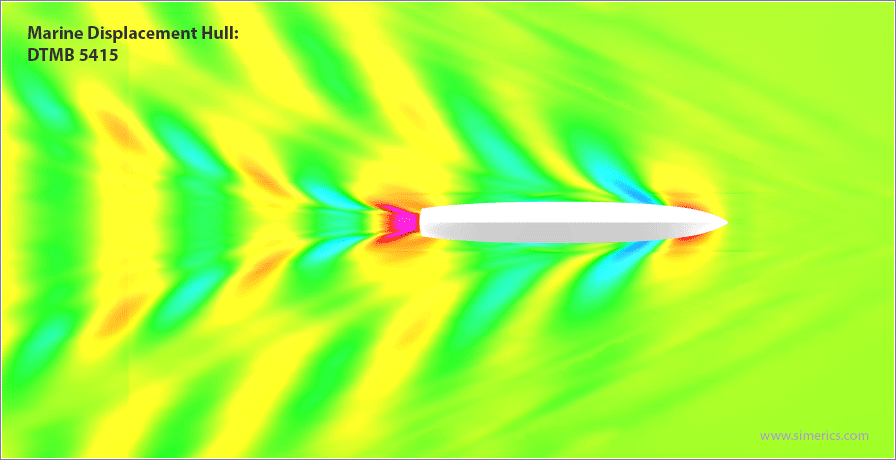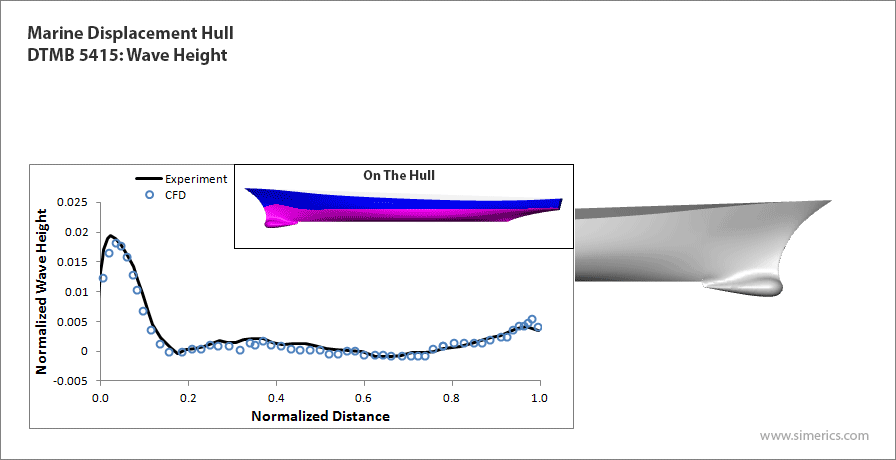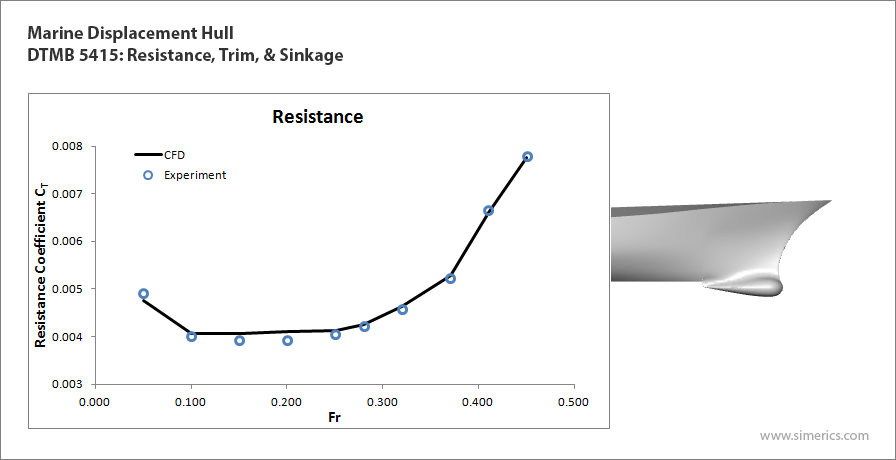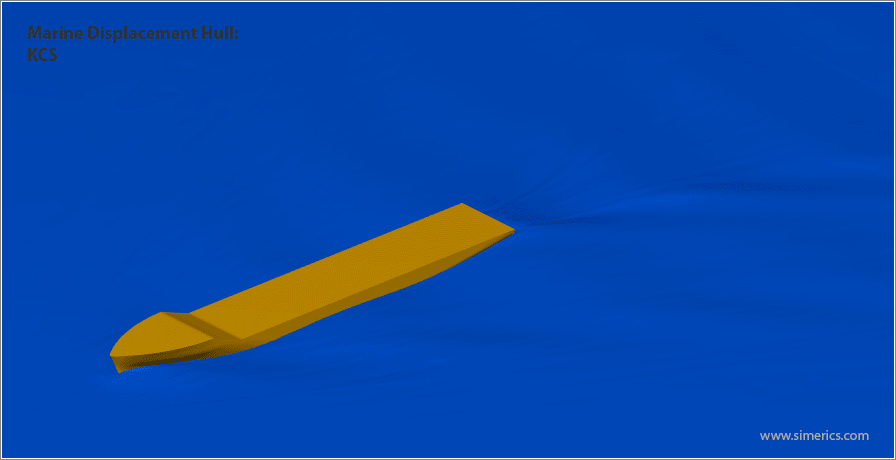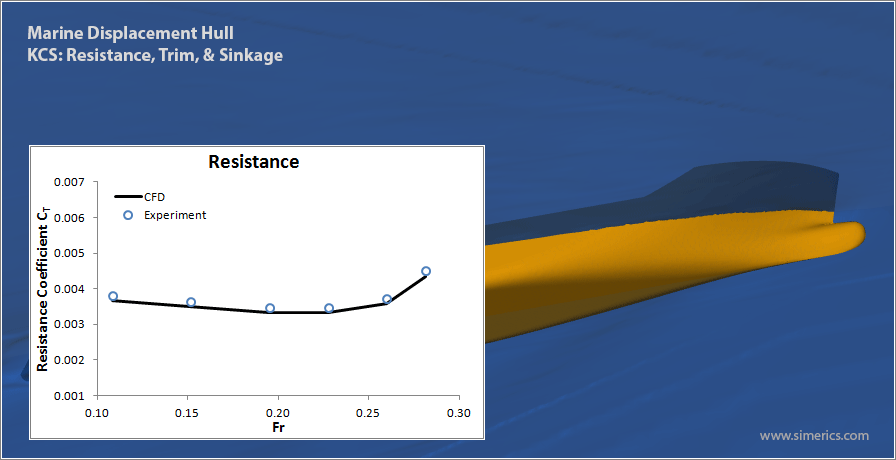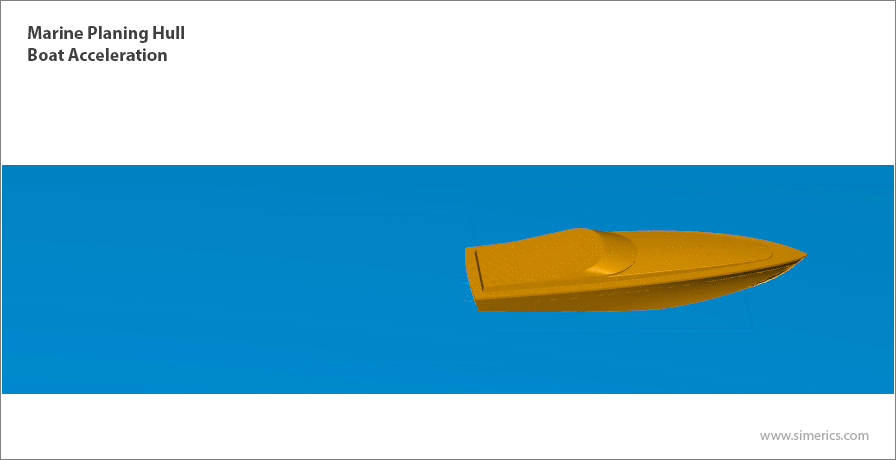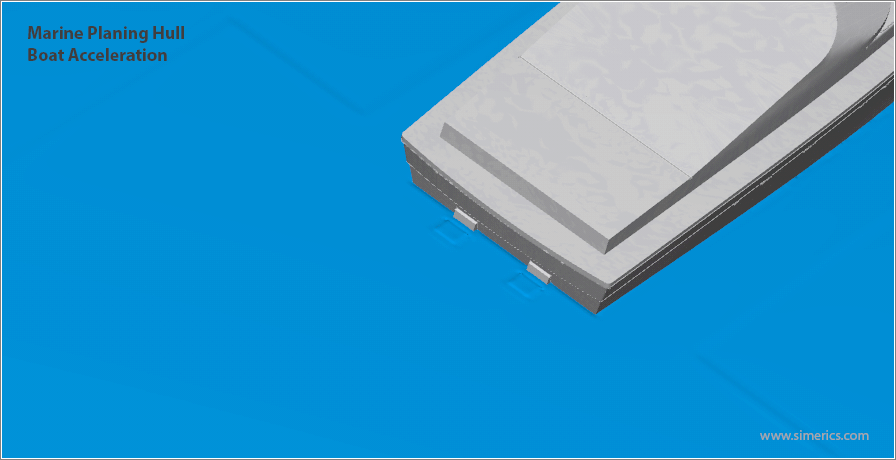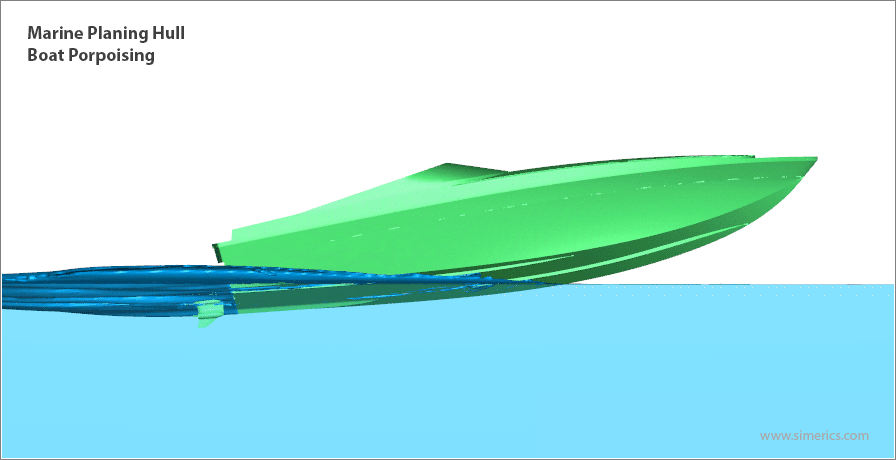The CFD simulation of a complete ship is really challenging as several different physical phenomenas must be taken into account in order to achieve an appropriate and accurate solution!
As foundation, the free surface of the water must be adequately predicted, also considering waves and the transient movement of the body as a result of outer forces. For the surface prediction, it is mainly important that a sharp transition between water and air is maintained, even when waves are formed. The interaction between the ship body, the water surface and the air is being modelled as fluid-structure interaction in which the rigid body movement is calculated by solving the equations of motion in parallel.
In addition to these main aspects, simulation-depending difficulties like the reflection of waves at the boundary conditions must be prevented. Furthermore, a lot of different reference length must be taken into account. On the one hand, the prediction of the wave system requires several ship lengths (a few hundred meters), whereas small gaps e.g. between the hull and the rudder are only in the range of centimetres.
At the propulsion system propeller, cavitation is mostly a mayor issue. Cavitation must be prevented under all circumstances as it may lead to structural damages and acoustic effects.
Complex geometry
- Several different independently moving geometries (hull, propeller and rudder)
- Big differences in reference length (e.g length of hull vs. rudder)
Complex physics
- Free surface with waves
- Floating construction
- Cavitation
- Transient approach required
At the development of our SIMERICS MP+ software, all the physical difficulties have been taken into account. With our software environment, you can easily handle this physical and geometrical challenge!
The grid is created with minimal manual settings within some minutes. The necessary grid refinements are implemented automatically. SIMERICS is the perfect CFD tool to layout your design from scratch.
What you can expect by SIMERICS MP:
- Calculation of drag
- Systematic optimisation to reduce drag force
- Required installed propulsion power
- Torques and forces at the propeller
- Cavitation prediction
- Efficiencies
- Interactions between the fuselage / propeller / rudder
- Simulation of manoeuvres
Feel free to have a look at our sample applications or contact our expert for maritime applications.
We would be happy to discuss your questions /// Your success is our goal

